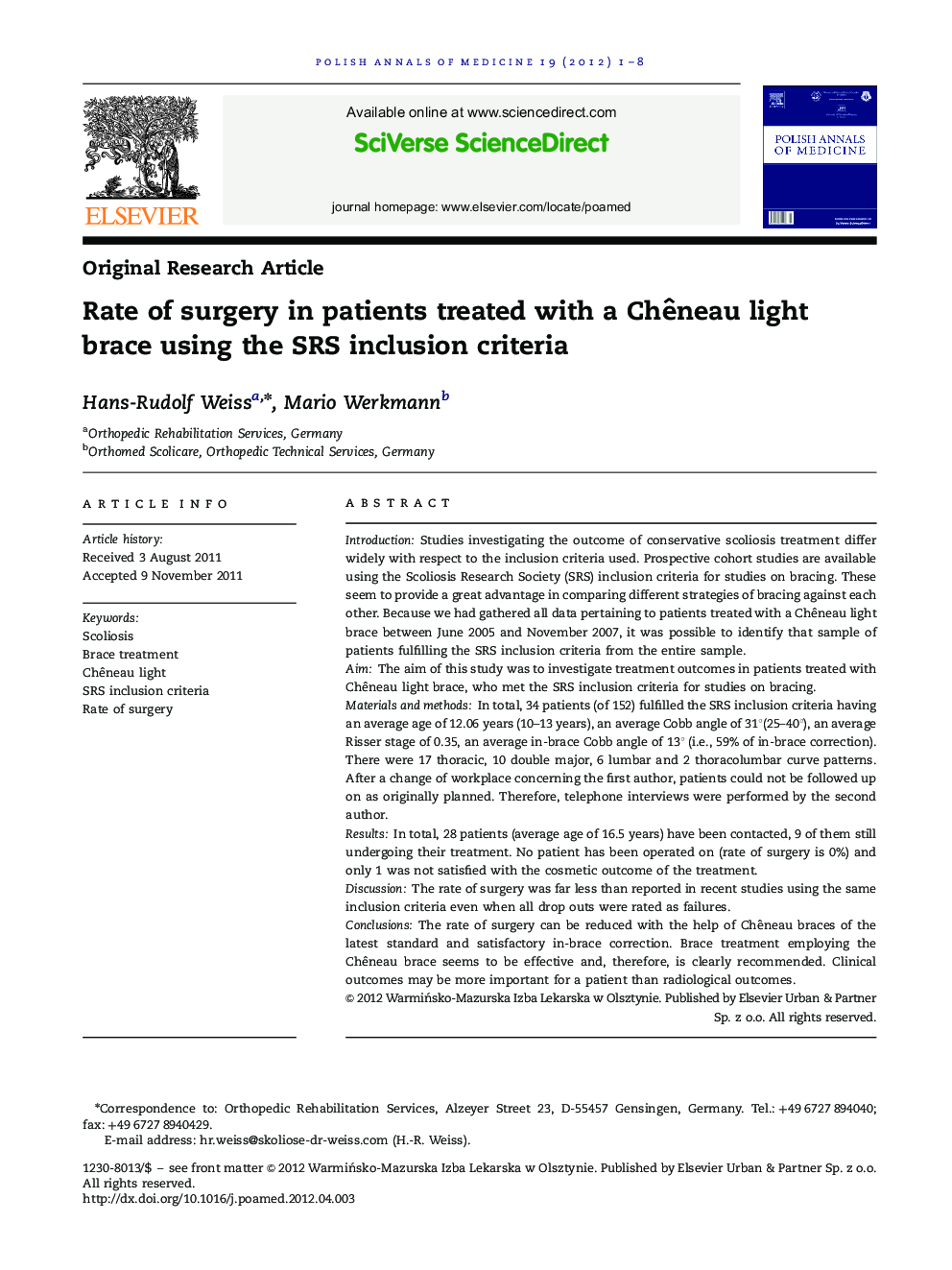| Article ID | Journal | Published Year | Pages | File Type |
|---|---|---|---|---|
| 2675944 | Polish Annals of Medicine | 2012 | 8 Pages |
IntroductionStudies investigating the outcome of conservative scoliosis treatment differ widely with respect to the inclusion criteria used. Prospective cohort studies are available using the Scoliosis Research Society (SRS) inclusion criteria for studies on bracing. These seem to provide a great advantage in comparing different strategies of bracing against each other. Because we had gathered all data pertaining to patients treated with a Chêneau light brace between June 2005 and November 2007, it was possible to identify that sample of patients fulfilling the SRS inclusion criteria from the entire sample.AimThe aim of this study was to investigate treatment outcomes in patients treated with Chêneau light brace, who met the SRS inclusion criteria for studies on bracing.Materials and methodsIn total, 34 patients (of 152) fulfilled the SRS inclusion criteria having an average age of 12.06 years (10–13 years), an average Cobb angle of 31°(25–40°), an average Risser stage of 0.35, an average in-brace Cobb angle of 13° (i.e., 59% of in-brace correction). There were 17 thoracic, 10 double major, 6 lumbar and 2 thoracolumbar curve patterns. After a change of workplace concerning the first author, patients could not be followed up on as originally planned. Therefore, telephone interviews were performed by the second author.ResultsIn total, 28 patients (average age of 16.5 years) have been contacted, 9 of them still undergoing their treatment. No patient has been operated on (rate of surgery is 0%) and only 1 was not satisfied with the cosmetic outcome of the treatment.DiscussionThe rate of surgery was far less than reported in recent studies using the same inclusion criteria even when all drop outs were rated as failures.ConclusionsThe rate of surgery can be reduced with the help of Chêneau braces of the latest standard and satisfactory in-brace correction. Brace treatment employing the Chêneau brace seems to be effective and, therefore, is clearly recommended. Clinical outcomes may be more important for a patient than radiological outcomes.
